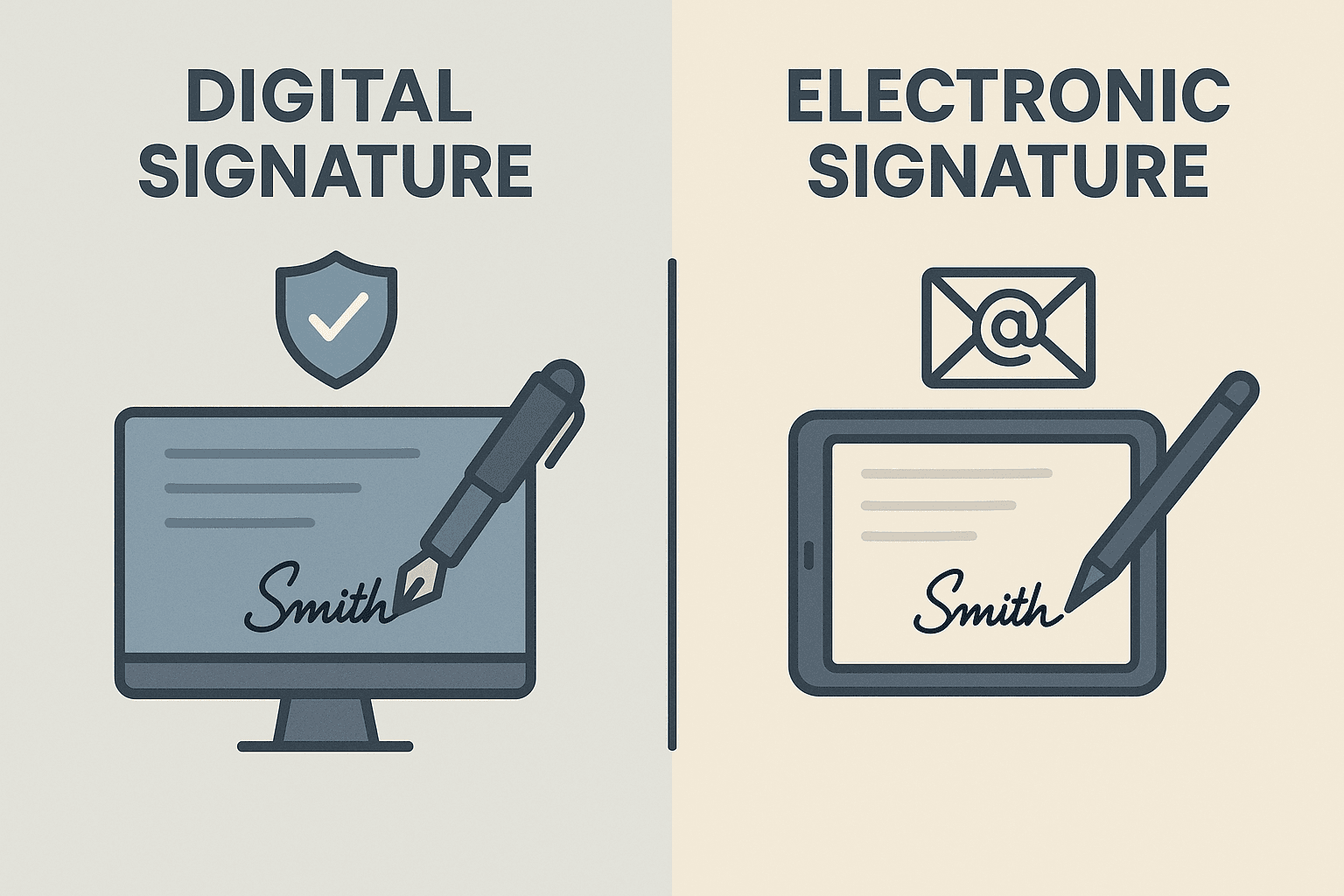WhatsApp or email with our sales team or get in touch with a business development professional in your region.
Choosing the Right Signature: Digital vs. Electronic





In the wave of digitalization, traditional handwritten signatures are gradually being replaced by electronic methods, but the technical details and differences in legal validity involved are often confusing.
Digital Signature vs Electronic Signature: Differences, Legal Validity, and Global Compliance Guide

Conceptual and Origin Differences
Electronic signature is a concept in the legal domain, focusing on the legal effect rather than technical implementation. Digital signature, on the other hand, originated in academia and is a specific application of cryptographic technology.
The ISO7498-2 international standard defines digital signature as: “Data appended to, or a cryptographic transformation of, a data unit that allows a recipient of the data unit to prove the source and integrity of the data unit and protect against forgery.”
Technical Implementation and Security Levels
Electronic signatures can be simple images of handwritten signatures, pre-agreed passwords, or even clicking an “Agree” button. These methods lack strong security mechanisms and are vulnerable to forgery and tampering.
Digital signatures are based on Public Key Infrastructure (PKI) technology, using a pair of mathematically related keys: private key and public key. The signer encrypts the document hash value with a private key to generate a digital signature, and the receiver uses the public key to decrypt and verify the authenticity of the signature.
Digital signatures provide three key security features:
- Authentication (confirming the identity of the signer)
- Integrity (ensuring the document has not been tampered with)
- Non-repudiation (the signer cannot deny the signing act)
Legal Validity and Global Recognition
Different jurisdictions have varying recognition of electronic signatures, but generally adopt a tiered recognition model.
The EU’s eIDAS regulation classifies electronic signatures into three levels:
- Simple Electronic Signature (SES): The most basic form of electronic signature
- Advanced Electronic Signature (AES): Uniquely linked to the signer and capable of identifying the signer
- Qualified Electronic Signature (QES): Created based on a qualified certificate, with equivalent legal effect to handwritten signatures
Global Compliance and Cross-Border Business
The compliance of electronic signatures is particularly important in cross-border business. The eIDAS framework enables mutual recognition of electronic signatures among EU member states, but companies need to note whether the partner’s country has signed a digital trust mutual recognition agreement with the EU.
Choosing a compliant trust service provider (TSP) is core to cross-border electronic signature compliance. eIDAS requires that institutions providing electronic signature services must pass qualification reviews by EU member state regulatory authorities to become a Qualified Trust Service Provider (QTSP).
Application Scenarios and Selection Recommendations
The choice between electronic signature and digital signature depends on business needs and security requirements:
Simple Electronic Signatures are suitable for:
- Internal document circulation
- Ordinary agreements
- Low-risk scenarios
Digital Signatures are suitable for:
- Financial transactions
- Legal contracts
- Government documents
- High-value, high-risk scenarios
Factors to consider when choosing a signature solution:
- Security requirements: Assess the sensitivity and importance of documents
- Ease of use: User-friendly platform
- Cost considerations: Pricing models of different solutions
- Compliance requirements: Compliance with industry and regional laws and regulations
Blockchain and AI technologies are driving development in the electronic signature field. Future electronic signatures will become more intelligent and automated, providing a stronger trust foundation for global digital trade.

Shunfang
Head of Product Management at eSignGlobal, a seasoned leader with extensive international experience in the e-signature industry.
Follow me on LinkedIn
Get legally-binding eSignatures now!
30 days free fully feature trial
Business Email
Get Started
 Only business email allowed
Only business email allowed
Latest Articles


